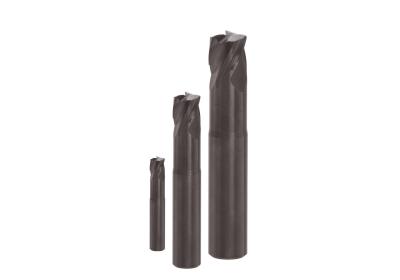
Tungaloy expands its SolidMeister, a family of solid endmills, to include FeedMeister solid-ceramic endmills. Solid endmill applications are expanding as components are becoming more complex and miniaturized using diverse, difficult-to-cut materials such as heat-resistant superalloys.
Pressing weight reduction requirements of aircrafts urges manufacturers to use more difficult-to-machine materials to make components. Typical materials, such as nickel-base superalloys, impose extreme stress on the tool’s cutting edge, thereby suppressing productivity improvement.
Tungaloy’s new ceramic endmill lines of the FeedMeister series provide extremely high productivity. Due to its high thermal resistance, ceramic endmills enable super high-speed milling. The enhanced FeedMeister line offers a tooling solution for demanding operations that require higher efficiency.
- At a glance:
- Ceramic endmills suitable for machining HRSAs
- FX150 ceramic grade enables high speed machining
- High-feed geometry provides extraordinary machining efficiency
- Also good for cast iron and specialty graphite materials
Contact Details
Related Glossary Terms
- endmill
endmill
Milling cutter held by its shank that cuts on its periphery and, if so configured, on its free end. Takes a variety of shapes (single- and double-end, roughing, ballnose and cup-end) and sizes (stub, medium, long and extra-long). Also comes with differing numbers of flutes.
- gang cutting ( milling)
gang cutting ( milling)
Machining with several cutters mounted on a single arbor, generally for simultaneous cutting.
- milling
milling
Machining operation in which metal or other material is removed by applying power to a rotating cutter. In vertical milling, the cutting tool is mounted vertically on the spindle. In horizontal milling, the cutting tool is mounted horizontally, either directly on the spindle or on an arbor. Horizontal milling is further broken down into conventional milling, where the cutter rotates opposite the direction of feed, or “up” into the workpiece; and climb milling, where the cutter rotates in the direction of feed, or “down” into the workpiece. Milling operations include plane or surface milling, endmilling, facemilling, angle milling, form milling and profiling.
- superalloys
superalloys
Tough, difficult-to-machine alloys; includes Hastelloy, Inconel and Monel. Many are nickel-base metals.

